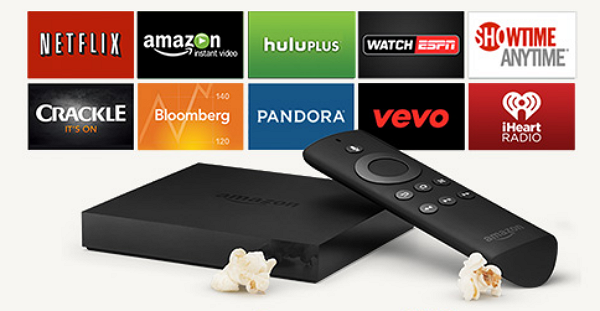
Earlier this year I obtained both a Roku 3 and an Amazon Fire TV. I use both devices and find both work very well for any home theater enthusiast and media geek. But what separates the two products, aside from a name?
With extensive playing around with each product, I've discovered what does it for me. While the Roku 3 remote is simpler, and contains a headphone jack (handy for when family is asleep, and you don't want to disturb anyone) it doesn't really have a killer feature.
Amazon however, does -- a Bluetooth remote. This may not be a killer for all customers, but I have a media cabinet with a wooden door that I prefer to keep closed, and the line-of-sight infrared remotes preclude that as an option. The Amazon box does not have this drawback. I've also used Google TV but it doesn't provide this simple, but ingenious solution either.
Sure the Amazon interface is nice, but so is that of Roku, and the latter has many more apps, or channels as the company prefers to refer to them as. Chromecast offers unique features, namely "casting" from smartphone or tablet to the tiny HDMI dongle, and that can be done with cabinet door firmly closed. But it feels more limited than actual boxes.
For pricing, of course, the Chromecast wins hands down. The other alternatives are in roughly the same ballpark in that regard. But cost plays less of a factor than features for most shoppers.
At this point the Roku offers much more and Amazon is still working to grow its ecosystem. But a Bluetooth remote is ingenious, at least for customers like me. It was just the right innovation to truly separate the device from rival set-top boxes. Yes, Bluetooth, a simple feature that's been around for some time, but that is what makes this box special. You could do a similar thing with RF, but I've used them and it's not the same sort of response.

